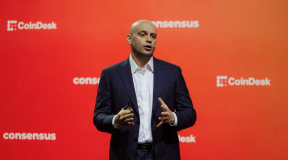The software on your computers, operating systems, and mobile apps can be adjusted and improved according to users' goals, priorities, and interests. This capability stems from open source software. Now, let's delve into the origins of open programming and its advantages.
What is Open Source?
Open source software is distinctive in that its source code can be thoroughly examined, modified, improved, and used as a basis for developing other programmes. Essentially, open source shows that the program's code is transparent and accessible, enabling users to adapt and transform it to suit their own needs without infringing on the developers' copyright. This idea allows everyone to scrutinise the source code for vulnerabilities, implement enhancements if necessary, and safeguard the security of their data.
Open source has emerged as an alternative to private software, which has an entirely closed code, rendering it inaccessible for viewing or modifying. The key principles of open source include:
- There are no restrictions on the sale or free distribution of software or individual programs.
- It is free to use, and it does not require payment to developers for product usage rights.
- The software must be distributed in its source code, and any deliberate alteration is forbidden.
- Everyone must have the chance to acquire or access such software and be free from any discrimination.
- The capacity to alter, personalise, adjust, and evolve the software, alongside creating additional programs and applications with the same source code.
Although open-source software is the most accessible option for everyone, it is governed by specific licences. These licences are agreements between developers and users. For instance, the Public Domain licence applies to materials within the public domain, permitting anyone to use them without permission and to define the relationship. Additionally, there are permissive, copyleft, and other licences, which differ only in nuances and subtleties. Nevertheless, all open-source programs allow for modification, free distribution, and more.
The origins of open source and its distinction from free software

In the 1980s, free software—the precursor to open source—came into existence. Richard Stallman, a developer at the Massachusetts Institute of Technology, coined the term. Despite the rapid growth of the IT sector and the increasing use of computers alongside a high demand for software, Stallman concentrated on creating free software. This initiative allowed users to download essential applications without relying on commercial solutions. As a result, Stallman developed GNU, the first free operating system, which included a text editor, games, and various other applications.
Later, Stallman and a group of enthusiasts founded the non-profit Free Software Foundation to support free software. The organisation collected donations to pay programmers who developed free programmes. Over time, the number of these programmes increased. Interestingly, the Free Software Foundation still exists and has stayed to its core principles for several decades:
- Free usage refers to the potential of operating free software products for various purposes.
- Free study — the capacity to modify, improve, rectify, and tailor programs to suit the preferences of individual users.
- Free distribution — the right to share the source code or a modified program at the user's discretion.
- Free enhancement — the ability to modify the program freely for the advantage of the community, employing any methods, tools, and techniques.
As time passed, the meaning of free software became unclear, as many English speakers interpreted “free” to mean “free of charge.” This misunderstanding implied that free software is a non-commercial product that cannot be studied or modified, which contradicts the true definition of free software. To address this confusion, programmers and free software advocates Eric Raymond and Bruce Perens proposed adopting the term “open source,” signifying programs with an open source code.
Therefore, open source is not inherently non-commercial; it can be distributed and used for a fee or bought and sold. The key distinction is that it is always available for all sorts of modifications and adjustments by ordinary users, regardless of whether they purchased the program or received it for free. Additionally, the non-profit foundation, the Open Source Initiative, was established to promote the open source theory.
Some examples of open source products
The first browser was Netscape Communicator, which dominated the 1990s. Eventually, it was overtaken by Internet Explorer, and the concept of open source software failed to gain significant traction. Nevertheless, the principle of accessibility remains a common thread among many creators of unique products who adhere to open source ideals.
A recent study examining the present state of open source software indicates that numerous IT companies are utilising its capabilities. Notable examples include the Linux operating system, the widely used WordPress content management system, cross-platform Apache software, the Nginx server, the MySQL database management system, and the Chromium web browser, which powers popular options like Google Chrome, Opera, and Microsoft Edge.
Thus, thanks to the open-source system, IT specialists and everyday users worldwide can freely access, implement, and benefit from the collective experience in software development and technology.
What are the other advantages of open source?

Participating in open source projects offers benefits to both developers and organisations. Here are more reasons why developers could benefit from transitioning to open source:
- Enhancing skills, studying others' solutions, and seeking new ones.
- Collaborating on a project can enhance professional skills and help expand business connections.
- The chance to publish new developments and solutions, gather feedback and seek a response.
- The opportunity to receive assistance from other developers.
- The prospect to explore new technologies and make a discovery.
Consequently, organisations—from local businesses to global corporations—gain advantages from open source:
- A significant opportunity to find skilled professionals in the open source community and encourage them to collaborate.
- The chance to improve the company's reputation, since contributions to open source are greatly appreciated in the IT industry.
- Reducing the costs related to developing custom software, as contributors to open source projects willingly test, improve, and refine various products.
The open source idea gives equal consideration to ordinary users who want to:
- Save money on software that is as equally effective as paid alternatives.
- Manage privacy and guarantee security, as most free software does not require users to submit their personal data.
- Utilise multiple browsers and various platforms concurrently, as open-source products are tailored for several platforms, enabling users of different operating systems to make use of them.
But there is always a “but”!
Nevertheless, the open-source concept has its drawbacks. One significant issue is the high likelihood of fraud. Open-source code can fall into the hands of malicious actors, potentially leading to system breaches. Developers prioritise security, but it is not always viable to detect vulnerabilities and rectify errors promptly, especially in large-scale projects.
Likewise, further challenges stem from the lack of essential documentation. This includes additional information, such as the type of support needed for a particular project, methods of connecting and contributing, the location of crucial data, how to access it, and so on. Surprisingly, this uncertainty leads many programmers to decline to participate in open source development.
Inadequate management and leadership lead to the absence of documentation and the risk of project stagnation. Consequently, it is vital to assemble a proficient team of specialists, provide effective guidance, oversee the data source, and recognise each team member's contributions.
The primary issue underlying these challenges is a lack of funding. Although most participants in open-source projects work out of pure enthusiasm and on their own initiative, any development necessitates investment. This includes paying for servers, domains, various infrastructure, and additional support services. Typically, the required funds come from charitable foundations, but this is often inadequate.
The open-source software market expands each year, effectively rivalling paid and private solutions. Anyone can join the open-source community, not just programmers. As a group of enthusiasts, they appreciate every form of contribution. For instance, they seek specialists to create and translate documentation, design, test to identify product flaws, ensure the security of services, and more. Open source provides access to high-quality IT products completely legally and at no cost (or, naturally, for minimal fees). It allows developers to enhance their skills, craft unique products for personal use, and share their findings with others.
Share this with your friends!






Be the first to comment
Please log in to comment